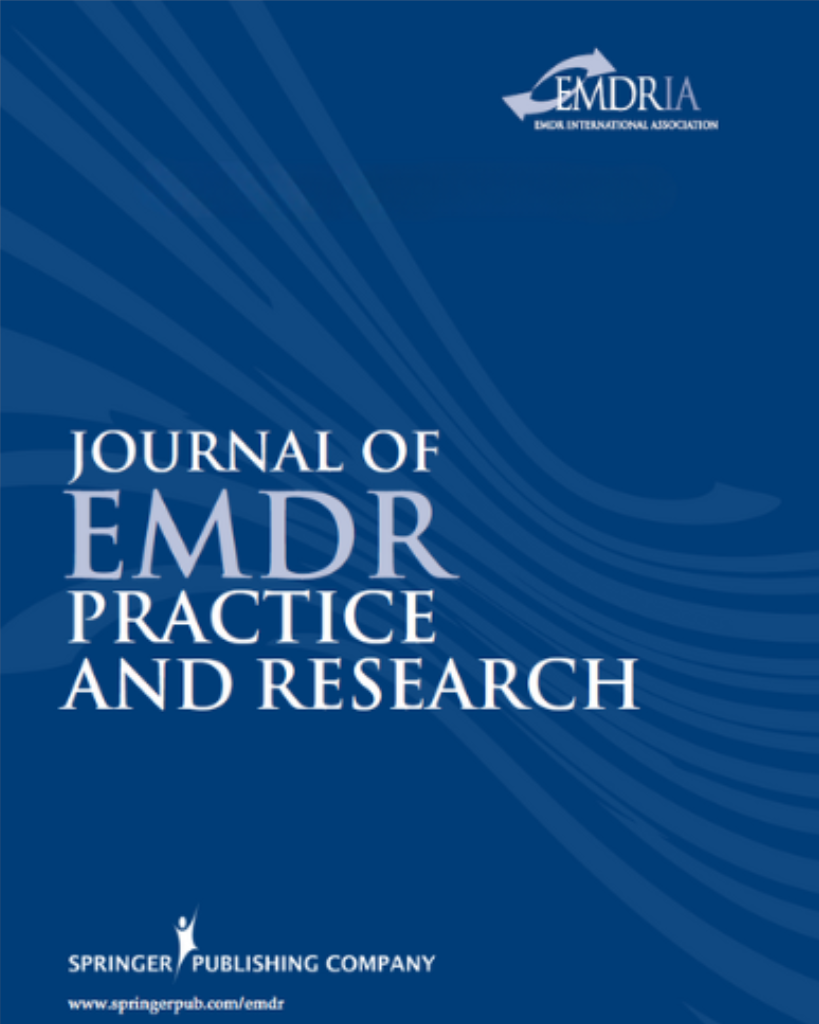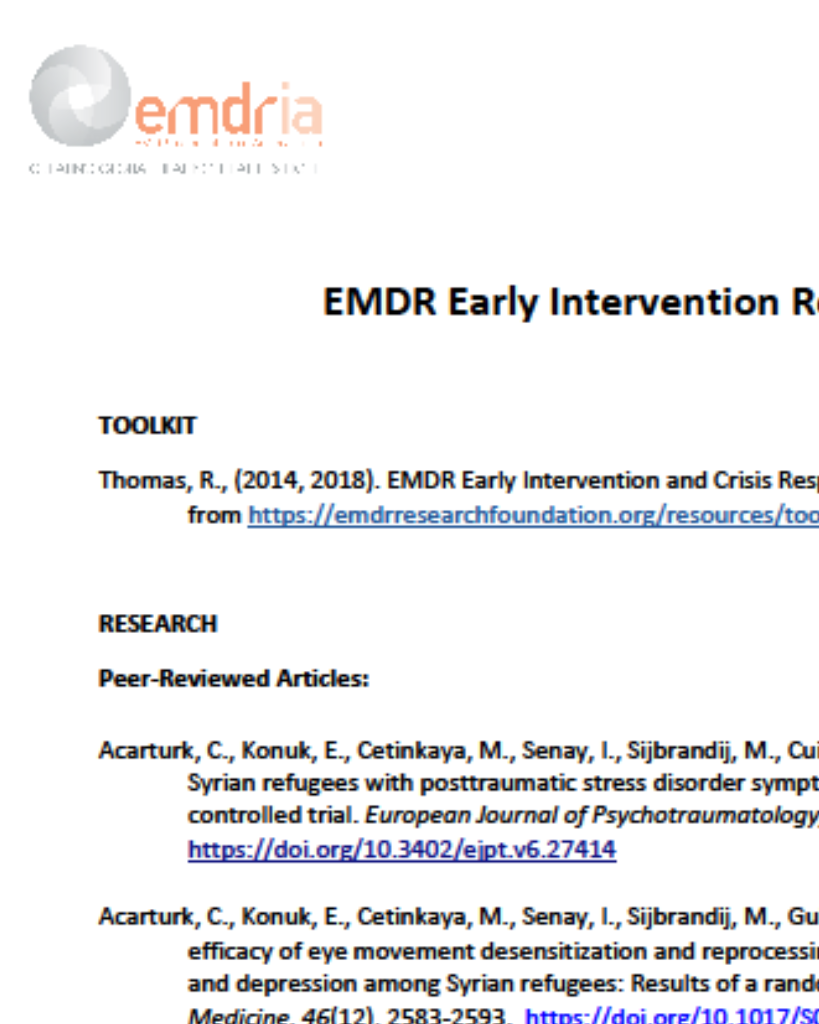Electroencephalography Coherence, Memory Vividness, and Emotional Valence Effects of Bilateral Eye Movements During Unpleasant Memory Recall and Subsequent Free Association: Implications for Eye Movement Desensitization and Reprocessing
The effects of bilateral stimulation during unpleasant memory recall followed by free association, similar to Phase 4 of EMDR therapy.
Article Abstract
“This study examined the effects of bilateral stimulation during unpleasant memory recall followed by free association, similar to Phase 4 of EMDR therapy. Forty-six female nonpatients were randomly assigned to one of three conditions: bilateral eye movements (BEMs), eye fixation with background movements (BDM), or eye fixation (Dot) control, each while recalling a moderately unpleasant memory and each followed by free association to the memory. Electroencephalography recordings were conducted on these participants during the 1-minute free association of the original memory after each of five administrations of the conditions. Results revealed only trend increases in Beta interhemispheric coherence following BEMs. However, statistically significant increases in Right Frontal Theta and Beta intrahemispheric coherences were found following BEMs, with similar trend increases for Left Frontal Theta and Beta and for Right Frontal Gamma. Cortical electrode maps are presented for these Beta coherence effects. Ratings of imagery vividness and emotional valence were collected after each set of eye movements plus free associations and showed a significant decrease across all conditions. Results are discussed within the context of a proposed integrated 2-stage cortical coherence model. Suggestions are made for future research, including investigation of possible implications for treatment of traumatic brain injury.”
—Description from publisher
Article Access
Open Access
Yaggie, M., Stevens, L., Miller, S., Abbott, A., Woodruff, C., Getchis, M., Stevens, S., Sherlin, L., Keller, B., & Daiss, S. (2015). Electroencephalography Coherence, Memory Vividness, and Emotional Valence Effects of Bilateral Eye Movements During Unpleasant Memory Recall and Subsequent Free Association: Implications for Eye Movement Desensitization and Reprocessing. Journal of EMDR Practice and Research, 9(2), 78-97. https://doi.org/10.1891/1933-3196.9.2.78
About the Journal
The Journal of EMDR Practice and Research is a peer-reviewed publication devoted to integrative, state-of-the-art papers about Eye Movement Desensitization and Reprocessing. It is a broadly conceived interdisciplinary journal that stimulates and communicates research and theory about EMDR, and their application to clinical practice. The Journal of EMDR Practice and Research is the Official Publication of the EMDR International Association.
Date
June 1, 2015
Creator(s)
Matthew Yaggie, Larry Stevens, Seth Miller
Contributor(s)
Angela Abbott, Chad Woodruff, Mike Getchis, Sean Stevens, Leslie Sherlin, Brandon Keller, Suzanne Daiss
Topics
Traumatic Brain Injury
Practice & Methods
BLS, Mechanisms of Action, Neurobiology
Extent
10 pages
Publisher
Springer Publishing Company
Rights
Copyright © 2015 EMDR International Association
APA Citation
Yaggie, M., Stevens, L., Miller, S., Abbott, A., Woodruff, C., Getchis, M., Stevens, S., Sherlin, L., Keller, B., & Daiss, S. (2015). Electroencephalography Coherence, Memory Vividness, and Emotional Valence Effects of Bilateral Eye Movements During Unpleasant Memory Recall and Subsequent Free Association: Implications for Eye Movement Desensitization and Reprocessing. Journal of EMDR Practice and Research, 9(2), 78-97. https://doi.org/10.1891/1933-3196.9.2.78
Series
9
Installment
2
Audience
EMDR Therapists
Language
English
Content Type
Article, Peer-Reviewed, RCT
Original Source
Journal of EMDR Practice and Research
Access Type
Open Access




